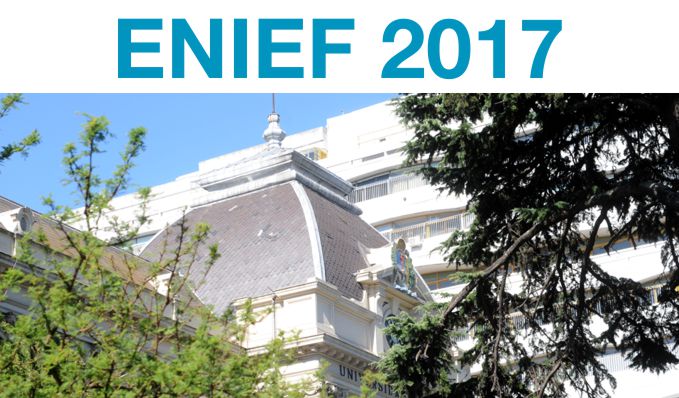Towards a new Turbulence Model based on Lagrangian Flows, Reduced Order Models and Global-Local Approximations
Sergio R. Idelsohn
Although the Navier-Stokes equations represent correctly both, laminar fluid flows as well as turbulent ones, the current power of the computers does not allow solving the latter without making empirical approximations that make the results are only predictable within the same margins from which the empirical approximation was realized. Taking into account that the vast majority of fluid flows that must be simulated by the industries are indeed of a turbulent nature, this makes it worthwhile to continue improving the models so that they fit more and more with the physics-mathematic equations. The current project in which we are working is in that sense.
Based on previous work, we are proposing a new turbulence model that fits more with the physic and can be solved in one of the current computer.
Always within the multi-scale models, in which all the turbulence model are based, the new idea consists in: a) treating the macro-scale with lagrangian particles, which convect and diffuse the turbulence [1]; b) solving the micro-scale as a problem of unstable laminar fluid flow subjected to velocity gradients; c) applying a Reduction Order Model (ROM)to the micro-scale [2]; d) going from the microscale to the macro-scale as in a Global-Local Model with a ROM [3].
[1] Lagrangian versus Eulerian integration errors; Sergio R. Idelsohn; Eugenio Oñate, Norberto Nigro, Pablo Becker, Juan Gimenez; Comput. Methods Appl. Mech. Engrg. (2015).
[2] Explicit Reduced Order Models for the stabilized finite element approximation of the incompressible Navier-Stokes equations. Joan Baiges, Ramon Codina, Sergio Idelsohn. Int. Journal for Num. Methods in Fluids. (2013).
[3] Global–Local ROM for the solution of parabolic problems with highly concentrated moving sources. Alejandro Cosimo, Alberto Cardona, Sergio Idelsohn. Comput. Methods Appl. Mech. Engrg. (2017).
















